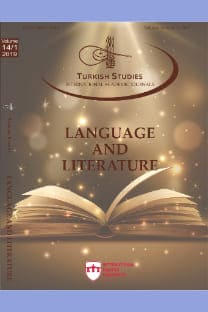A Jungian View of J. R. R. Tolkien’s The Lord of The Rings
A literary hermeneutic model based on the theories of Carl Gustav Jung, called archetypal interpretation or Jungian interpretation, has steadily been presenton the literary scene since the 1950’s and, in the second half of the 20th century, rivalled even the more prominent hermeneutic models. Even though some of Jung’s ideas are nowconsidered outdated or have been met with fierce criticism by t the function of a literary work-the function is seen as mainly compensatory-whereas the meaning of a text is sculpted by the cultural and psychological myths. A prime example of a literary work abounding in archetypal content is the mythological creation of J.R.R. Tolkien, The Lord of the Rings. We have written extensively about the actualizations of specific archetypes in the trilogy, so for this essay, we are going to give a more general look at the trilogy through the prism of Jung’s ideas on individuation and give a novel idea as to how the trilogy can be interpreted within the Jungian model of interpretation, detailing specifically Jung’s concept of quaternity and its importancein Jungian theory.
J. R. R. Tolkien’in Yüzüklerin Efendisi’ne Jung Açısından Bir Bakış
Carl Gustav Jung'un arketipik yorumlama ya da Jung yorumları olarak adlandırılan teorilerine dayanan edebi bir yorumsal model, 1950'lerden bu yana edebiyat sahnesinde devamlı yer almakta ve 20. yüzyılın ikinci yarısında, en belirgin hermenetik modellerinibile canlandırmıştır. Her ne kadar Jung'un fikirlerinin bazıları modası geçmiş olarak kabul edilse deveya modern eleştirmenler tarafından sert eleştirilerle karşılanmış olsa da, arketipik yorumlamanın popülaritesi, neoromantisizm denilen Romantik fikirlerin canlanmasının bir kez daha popüler hale geldiği 21. yüzyılda pek de azalmadı. Jung'un arketipler teorisineöncelikle edebi eserlerdeki resimlere ilgi duyuyordu. Semboller ve arketipler ve bu nedenle, bir edebi eserin bir Jungian yorumu, bu arketip görüntülerini analiz eder ve arketiplerin bir edebi eserin biçimini ve işlevini tanımlamasında ısrar eder -işlev, büyük ölçüde telafi edici olarak görülür,bir metnin anlamı ise kültürel ve psikolojik mitlerin sayesinde şekil almaktadır. Arketip içeriğinde bolca yer alan edebi eserlerin ana örneği J.R.R. Tolkein’inYüzüklerin Efendisidir. Üçlemede belirli arketiplerin hayata geçirilmesi hakkında kapsamlı bir şekilde ele alındı, bu nedenle bu araştımanın amacı için, Jung'un bireysellik fikirleri ve dört psikolojik fonksiyonel bakış açısından yaklaşarak üçlemeye daha genel bir bakış yapacağız. Üçlemenin Jung yorumlama modeli içinde nasıl yorumlanabileceği, özellikle Jung'un kuaternite kavramını ve Jung teorisindeki önemini detaylandıran yeni bir fikir vereceğiz.
___
Bogar, Greg. Dreamwork and Self-Healing: Unfolding the Symbols of the Unconscious. London: Karnac Books, Ltd., 2009. https://doi.org/10.1525/jung.2012.6.2.128
Honegger, Thomas. More Light than Shadow? Jungian Approaches to Tolkien and the Archetypeal Image of the Shadow. http://www.tolkiendil.com/essais/tolkien_1892- 2012/thomas_honegger#fn__3
Grant, Patrick. Tolkien: Archetype and Word. http://www.crosscurrents.org/tolkien.htm
O’Neill, Timothy R. The Individuated Hobbit: Jung, Tolkien and the Archetypes of Middle-Earth. London: Thames and Hudson, 1979.
Jung, Carl Gustav. Psychology and Religion: West and East. London: Routledge & Kegan Paul, 1970.
Moore, Robert & Gillette, Douglas. King, Warrior, Magician, Lover: Rediscovering the Archetypes of the Mature Masculine. San Francisco: HarperCollins, 1991. https://doi.org/10.1525/jung.1.1993.11.4.17
Skogemann, Pia. Where the Shadows Lie: A Jungian Interpretation of Tolkien’s The Lord of the Rings. Wilmette: Chiron Publications, 2009.
Stevens, Anthony. Archetype Revisited – An Updated Natural History of the Self. Taylor & Francis e- Library, 2004.
Tolkien, J.R.R. The Lord of the Rings. New York: Del Rey, 1986.
